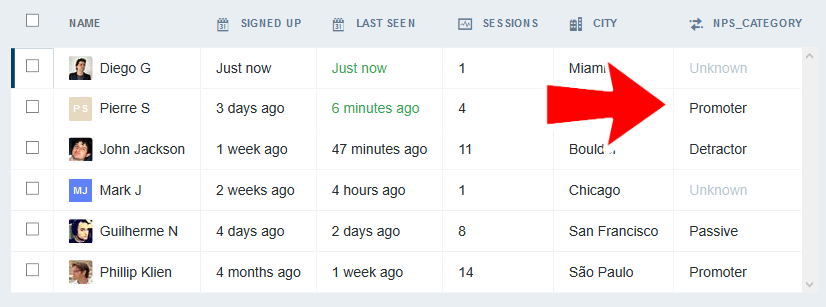How we use NPS at Mural.ly – FanExam Customer Interview
[Update 2019/2: Mural.ly is now Mural.co, links updated, text not changed]
It’s with great pleasure that we will be sharing how leading SaaS companies & websites are using the Net Promoter Scoresm with FanExam. We are starting a collection of interviews with FanExam clients to share knowledge on how they are implementing NPS® to use customer feedback to grow their businesses. We will be talking with CEO’s, Product Managers, and Marketing Leads to understand tbeir experiences and best practices.
Our first interview is with Agustin Soler (@agussoler) – Co-Founder and Product Manager at Mural.ly. We will learn how Agustin uses NPS data to help enhance his product. We will also talk about his lessons learned and his tips to measuring NPS on a global SaaS product.And now to our interview.
Hello Agustin – and thank you for your time for this interview. Let’s get started, please tell us a little about Mural.ly in your own words and your role at the company.
Mural.ly is essentially an online whiteboard – where we offer the best way for virtual brainstorming and collaboration. We’re a SaaS tool allowing remote teams to engage in the creative process.
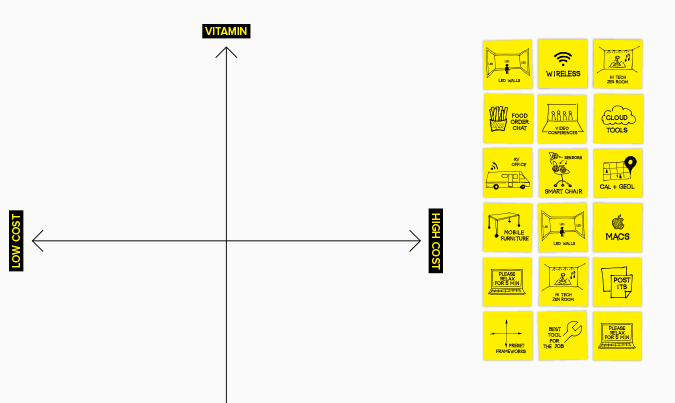
I am Mural.ly’s co-founder & product manager.
Has measuring NPS with FanExam changed anything in your company?
 Yes. We take customer feedback very seriously and the NPS is a great framework to work with. Collecting feedback directly from within our app allows us to have a steady pulse of what customers really think about our service and allows us to identify and attack pain-points immediately. As a role of a product manager, I want to understand at all times the customer satisfaction for my product.
Yes. We take customer feedback very seriously and the NPS is a great framework to work with. Collecting feedback directly from within our app allows us to have a steady pulse of what customers really think about our service and allows us to identify and attack pain-points immediately. As a role of a product manager, I want to understand at all times the customer satisfaction for my product.How was your experience with getting started measuring NPS?
FanExam makes life really easy. We got up and running real quickly, just adding the javascript tag and started collecting data almost immediately.
How do you react to customer ratings and feedback?
We use Intercom to talk to our clients, and with the FanExam integration into Intercom – we simply added new threads to our existing communication process.
Read more about FanExam’s integration with Intercom here.
Is there a specific feedback from a specific client that you recall that called your attention? How was it treated?I recalled that a client mentioned that our control scheme wasn’t really working for him. With that in mind I started asking other clients about this and found out it was a big issue among most of our users.
How is the NPS information shared within your company?
We have a big-screen TV with our NPS score available for all to see. Besides that, I export the open feedback from FanExam and categorize this.information based on feedback type and categories.
I actually use a whiteboard from our own tool (a Mural.ly account managed me by exporting FanExam data) to help group the responses and share this with our CEO & team.
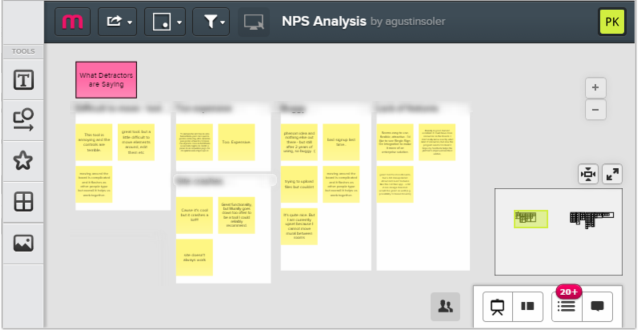
Oh yeah, we also use FanExam’s Slack integration.
Looks like NPS is almost too good to be true. Do you have any criticisms for NPS?
I have spent a lot of time trying to wrap my head around our the actual NPS score. What does it mean, how does it relate to our true customer loyalty, and how can I use this to improve my product. What I have found is that following the NPS trend score and really diving into the open feedback and why the users gave that feedback are excellent ways of applying customer feedback to product development.
Do you have any tips or recommendations for other product managers who are interested in using NPS on their SaaS products?
It’s really simple and there is no reason any product manager would not measure NPS. Our biggest challenge at Mural.ly is finding the timing sweet spot to survey our clients. If we ask them to rate us too early – we tend to get lower ratings because these visitors have not yet experienced what our platform has to offer. However, this feedback is essential to improve our on-boarding process. I’d rather have a lower NPS score but have access to what happens in my customer’s mind as they engage with my platform at specific touch-points.
Thank you for your time. Do you have any closing remarks?
Love the product, hope you keep improving it as you’ve been doing it until now.
On behalf of FanExam, I’d like to thank Agustin for taking the time and sharing his experience with us. BTW – Agustin just had a daughter, welcome Mercedes!
Cheers,
FanExam Team
Net Promoter Score (NPS) for Google Analytics
 We are in the age of data-driven decisions (or at least data-influenced) – and every website should rely on analytics as a source of information to drive strategy. You – or someone on your team – probably interacts with Google Analytics multiple times a week, slicing and dicing visitor behavior data trying to uncover insights. You want to know how to improve your business to generate more conversions. An automatic integration of Net Promoter Score for Google Analytics makes it easy to connect what your visitors are doing with why they are doing it. Once you integrate Google Analytics with FanExam NPS, you get quantitative feedback from analytics, together with actionable feedback on how your customers think about your website or app. The integration of NPS and Google Analytics is simple to set up.
We are in the age of data-driven decisions (or at least data-influenced) – and every website should rely on analytics as a source of information to drive strategy. You – or someone on your team – probably interacts with Google Analytics multiple times a week, slicing and dicing visitor behavior data trying to uncover insights. You want to know how to improve your business to generate more conversions. An automatic integration of Net Promoter Score for Google Analytics makes it easy to connect what your visitors are doing with why they are doing it. Once you integrate Google Analytics with FanExam NPS, you get quantitative feedback from analytics, together with actionable feedback on how your customers think about your website or app. The integration of NPS and Google Analytics is simple to set up.In a nutshell, you open an account with FanExam, and then simply send NPS scores automatically into Google Analytics by activating the integration setting for Google analytics.
Read more about the background: The vast amount of reports, drill-downs, cohorts and dashboards Google Analytics offers may bring golden nuggets of information that can change the future of your website. BUT . . . Remember though, all of these stats are behavior-based, and we don’t really know if the customer is happy or upset – and most importantly: WHY. Collecting NPS responses automatically let’s you find out the WHY because you listen to the voice of your customers.
What’s missing? The Net Promoter ScoreSM Of course!
Your website probably has fancy dashboards with some very advanced metrics specifically designed for your business. You are probably already rolling out A/B tests designed to optimize a specific KPI, or denominator. The problem is – these metrics are probably correlated to your business success, but are these factors long-term valuable users?
Google Analytics measures your visitors’ behavior,
NPS® measures their satisfaction.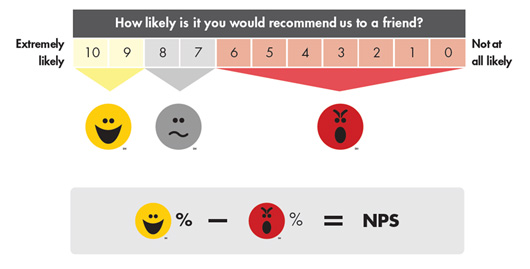
The Net Promoter Score (NPS) is becoming the standard metric for measuring customer satisfaction. Classifying your customers into Promoters, Passives, and Detractors and learning why they either love or hate your product is the system used by companies such as Apple, Amazon, Zappos and other industry leaders. Having this information in your CRM system is invaluable in communicating with your clients.
With one simple survey question, the NPS framework can segment your customers based on their satisfaction & loyalty. This score correlates strongly with a company’s growth, according to extensive research done by the Harvard professors who created the Net Promoter Systemsm.
Learn more:Why your SaaS needs the Net Promoter Score to measure customer satisfaction.Why have NPS data in Google Analytics
Maybe you already do measure your NPS – but do you have this information available in your Google Analytics account? The capability of segmenting your behavioral data based on the NPS score offered by your users will uncover knowledge on where you should focus your optimization efforts to truly grow your business. Some questions that NPS can help answer in your Google Analytics reports include:
What are visitors really thinking about your service?
Turn on a 24/7 customer feedback channel. By proactively engaging with your customers about their experience on your site, anticipate future behavior (ex: churn) and react accordingly. Bring this data to your dashboards.
What features or content are your Promoters engaging with that your Detractors ignore?
Find value patterns for your site. Maybe what your happy customers are buying is different than what your value proposition states. Make sure you align what you are selling with what satisfied customers are buying.
What keywords or referrals bring your target audience?
Better understand adwords, SEO, and social media investments by identifying which of these sources are bringing the most Promoters to your site. Remember that not everyone is a perfect target market fit – focus on channels that bring the best compatible prospects.
Ultimately – being able to segment any report available in Google Analytics based on the customer satisfaction of your user opens up an entire new perspective on actionable analytics.
Ready for NPS customer data in your Google Analytics reports?
 FanExam NPS survey
FanExam NPS surveyOK, here’s where our unabashed pitch comes in. FanExam offers a fully functional FREE platform to measure NPS on any website. Just install a small JavaScript snippet (just like the Google Analytics tag) to start surveying your visitors and collecting Net Promoter Score ratings. Answering a survey will take your users less than 20 seconds – a small effort that brings huge improvement feedback about your site.
How to integrate FanExam in Google Analytics
Below are the 4 simple steps necessary to start measuring NPS in your offering using FanExam & Google Analytics. FanExam offers a pretty complete FREE plan to let you get acquainted with the platform and the integration.
- Create a new FanExam account
- Install the FanExam JavaScript snippet
- Create a custom dimension in Google Analytics for NPS data:
- Access your website property in Google Analytics and select the web property you with to integrate
- Click the Admin link from the top menu
- Under the PROPERTY column, select the Custom Definitions option and then click the Custom Dimensions link
- Click the + NEW CUSTOM DIMENSION button
- Input
NPS FanExamas the name, and selectUserfrom the Scope menu - Leave the Active flag selected and then click Create
- Click the Done button
- In the Custom Dimensions table presented, look for the NPS FanExam dimension just created and notice the Index value for it
- Turn on the Google Analytics integration in the FanExam integration settings & update the Customer Dimension Index for the value created in Google Analytics.
That’s it! Every time a customer responds the NPS survey, FanExam will submit an event to Google Analytics with the following information every time a user reponds to a survey:
Event Category: NPS_FanExamEvent Action: the NPS rating for that user, from 0 to 10Event Label: the customer type: Promoter, Passive or DetractorBesides the event, FanExam will also submit a custom dimension value called
NPS FanExamfor that user according to the index you configured using the steps above.Viewing NPS data in Google Analytics reports
The best way to view FanExam NPS data in Google Analytics is to use the advanced segments feature. Setup takes about 5 minutes, and once it’s concluded you can easily drill-down any report using NPS results.
Creating NPS Custom Dimensions in Google Analytics:
- Access your website property in Google Analytics and select the web property you with to integrate
- Click the Admin link from the top menu
- Under the VIEW column, make sure you selected the correct website view in the dropdown, and then select the Segments option under the PERSONAL TOOLS & ASSETS section
- Click the + NEW SEGMENT button
- Input
NPS Detractorsas the segment name - Click the Conditions option under the Advanced section
- Click the first drop-down – should be Ad Content, and start typing
NPSto select the NPS FanExam option under Custom Dimensions. - Then, click the next drop-down – should be contains, and select the matches regex option
- In the text box input
^([1-6])$ - Click the Save button on the top, your segment should look like this:
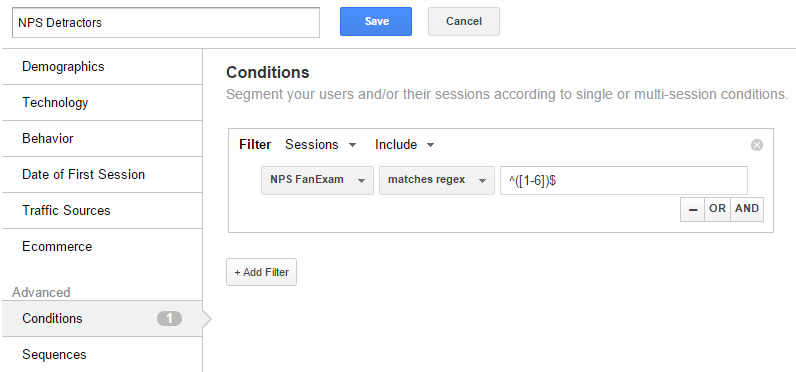
- Repeat steps 4 through 10 but replacing the segment name in step 5 and matches regex value in step 9 for:
NPS Passivesin step 5 and^(7|8)$in step 9NPS Promotersin step 5 and^(9|10)$in step 9
Voilà!
Update – February 2017
Checking NPS with Google Analytics is now even easier: Use the SeoHighLighter dashboards to get an automatically updated overview.
Measure Net Promoter Score in Intercom
 One of the top requested integrations for the FanExam platform was Intercom – a CRM platform for SaaS companies that makes it easy to personally communicate with their users through targeted, behavior-driven email and in-app messages.
One of the top requested integrations for the FanExam platform was Intercom – a CRM platform for SaaS companies that makes it easy to personally communicate with their users through targeted, behavior-driven email and in-app messages.
How did we learn this? We asked FanExam users for open feedback through our own NPS survey!
Intercom.com calls itself “a new approach to CRM”. At its core, Intercom is a platform that receives messages from customers and then lets a company segment them so that they can be accessed by relevant people for responses (the segmentation can be by keywords, but can also be by things like length of membership, duration and date of last visit, and so on). When employees respond to customers, companies can create profiles so that the responses come from actual people rather than faceless general accounts.

Enter the missing link: Net Promoter ScoreSM
The Net Promoter Score is the standard metric for measuring customer satisfaction. Classifying your customers into Promoters, Passives, and Detractors and learning why they either love or hate your product is the system used by companies such as Apple, Amazon, Zappos and other industry leaders. Having this information in your CRM system is invaluable in communicating with your clients (learn more: Why your SaaS needs the Net Promoter Score to measure customer satisfaction).
Ready for NPS customer data in your Intercom dashboard?
FanExam offers a seamless integration of customer NPS® data in Intercom.
See who your customers are & what they do in your product.
Intercom shows you the people using your SaaS product and what they do in them, so you can answer questions about your customer base in real-time. With NPS data you can go even further and ask questions such as:
- Which of our Promoter Companies have not logged in the last 30 days?
- Do Promoters and Detractors use different features?
- Which behaviors do Promoters perform that Passives don’t?
Basically, learn different behaviors that bridge the gap between people who love your solution to people who hate it.
Get quality product feedback from the right customers
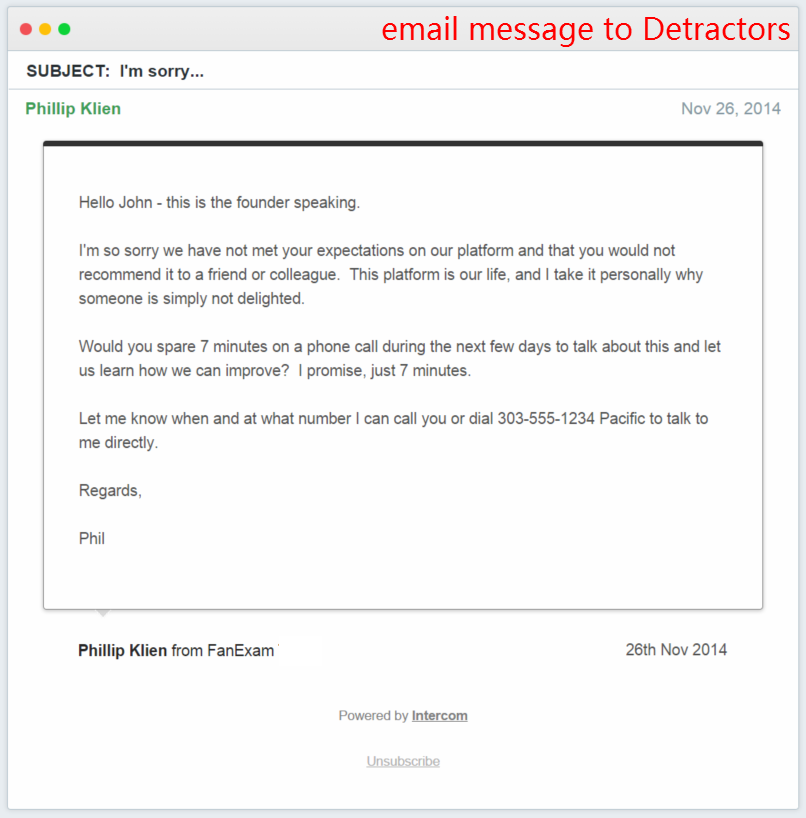 Intercom shows the people using your product and what they do in it, making it easy to quickly find the right people to ask for feedback. Knowing what each user’s NPS classification is allows you to approach them differently and further dig into root causes. Some of the benefits you can use Intercom with NPS data are:
Intercom shows the people using your product and what they do in it, making it easy to quickly find the right people to ask for feedback. Knowing what each user’s NPS classification is allows you to approach them differently and further dig into root causes. Some of the benefits you can use Intercom with NPS data are:- Identify Detractors and engage with them before they increase they cancel & stop using your product.
- Learn why Detractors are unhappy with your product – really see which features are frustrating customers (and why).
- Enhance your marketing by learning how your Promoters define your product and it’s benefits.
- Identify what it takes to turn your Passives into Promoters.
Use Intercom’s automatic email & in-app messaging features to interact with the different types of NPS responses.
How to Measure Net Promoter Score in Intercom
Below are the 3 simple steps necessary to start measuring NPS in your offering using FanExam & Intercom. FanExam offers a pretty complete FREE plan to let you get acquainted with the platform and the Intercom integration.
- Create a new FanExam account
- Install the FanExam JavaScript snippet on your website
- Turn on the Intercom integration in the FanExam integration settings
That’s it! Every time a customer responds the NPS survey, FanExam will submit an event to Intercom called
Rated NPS FanExamwith the NPS Score and NPS Category (Promoter, Passive or Detractor). FanExam will also create a custom attribute (see Intercom Docs) calledNPS_FanExamavailable directly in your filters.You’re all done. Automatically measure NPS in Intercom. Now go interact with your customers.
FanExam Net Promoter Score data in Slack
 Get your Net Promoter Score data in Slack. Slack offers a real-time messaging, archiving and search tool that facilitates better communication within a team. In Slack’s own words:
Get your Net Promoter Score data in Slack. Slack offers a real-time messaging, archiving and search tool that facilitates better communication within a team. In Slack’s own words:Slack brings all your communication together in one place. It’s real-time messaging, archiving and search for modern teams.
We use Slack. It’s our central nervous system for communication at FanExam.
All communication should be around the customer
Fluid communication is fundamental for a successful team. And the main subject of the communication should be about delivering happiness to your customers. Bring your customer’s Net Promoter Score feedback directly into Slack, and make this the center of the conversation.
With the Slack integration turned on in your FanExam account, every time a customer sends an open feedback, the response will be published in real-time to a selected channel in Slack. See example below:
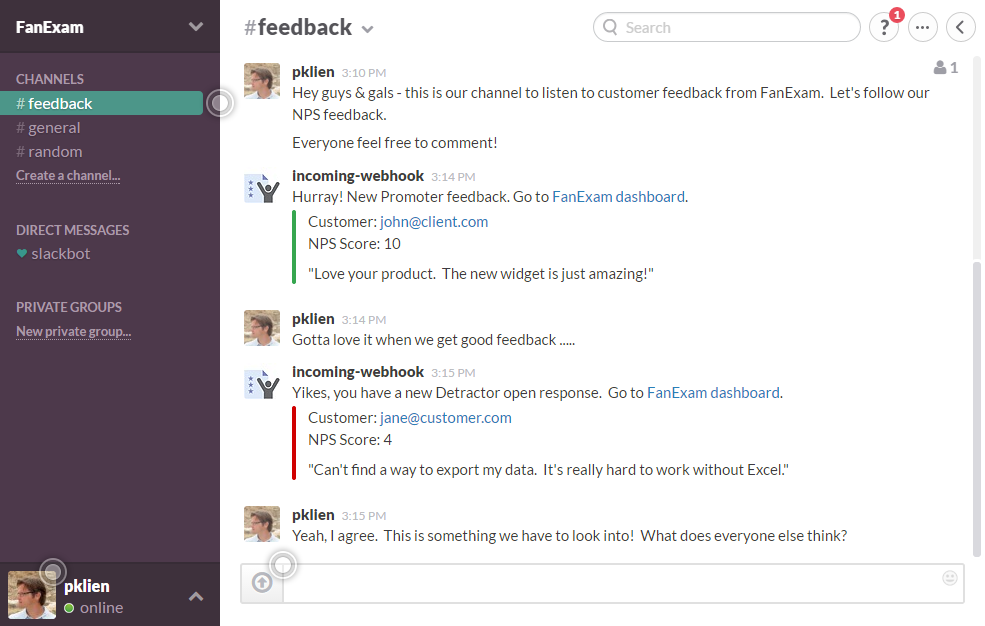
This is invaluable to discuss different responses and bring customer feedback directly into your workflow via Slack.How to Integrate FanExam into Slack
Turning the Slack integration on in FanExam is really simple, and takes under 4 minutes. You can define specific NPS ratings to be published to different boards. Just follow these five steps to create a new Slack reaction:
- Open the New Incoming Webhook Integration in Slack and choose a channel (we recommend the
#generalchannel).
- Scroll down to the Integration Settings. Under Descriptive Label please enter
New FanExam NPS Responseand click Save Settings.
- Scroll down again to the Integration Settings and copy the value for
Webhook URL.
- Open the workflow settings tab in FanExam.
- Add a new automated reaction by selecting the customer type, and from the then do this menu, select the Slack integration notification.
- In the text field, input the value for
Webhook URLfrom step 3 and click the Create reaction button.
Repeat these steps for each customer or feedback type.
That’s it, you’re done. Enjoy improving your customer relationships in Slack!
- Open the New Incoming Webhook Integration in Slack and choose a channel (we recommend the
Why your SaaS needs the Net Promoter Score to measure customer satisfaction
 Image Source: pics4world.com/vb/showthread.php?t=817
Image Source: pics4world.com/vb/showthread.php?t=817When Neo took the red pill he forgave the “ignorance of illusion” of the fabricated reality of the Matrix in favor of “truth of reality” — even though it was a harsher, more difficult life. This is exactly how I feel towards SaaS companies that have embraced the Net Promoter Scoresm (NPS®) – they really want to grow by diving into the customer experience and grasping the true feelings of their clients.
You are probably thinking that you already measure customer sentiment: “but I already have Google Analytics installed on my site – I already know my customer behavior.” Ok – that’s the blue pill, ESP, denial, whatever you wanna call it. You should be thinking: “we consistently use a formal process for measuring customers satisfaction & loyalty”.
Why NPS: Simple, Proven Framework
The Net Promoter System® is a proven method used to gain insight into customer loyalty (behavior and sentiment) of brands and products and is trusted by the world’s most respected companies (Apple, Amazon, Harley-Davidson, etc). With just one question (and an open-ended follow-up question used to identify root-causes), you can truly grasp customer satisfaction for your product/service:
The would recommend question is far and away the best single-question predictor of customer behavior across a range of industries – and not just referrals but repeat and expanded purchases, along with willingness to provide constructive feedback. Supported by hundreds of cases and tons of research, the NPS is becoming the standard management tool to gauge the loyalty of a firm’s customer relationships.
For more information about the NPS, please visit: netpromotersystem.com.
7 Reasons your SaaS should start using NPS today
Is the customer sentiment towards your product positive – or are clients simply using it because there is no alternative?
Although NPS was originally created before the existence of SaaS products, it’s a perfect fit for this type of offering. Below I listed the principal benefits of using NPS as your customer satisfaction gauge for your SaaS product:
1Reduce churn – Identify & reach out to your detractors
Detractors are unsatisfied with your product and will probably cancel their service or never purchase again. Kill churn by learning who these customers are, and engaging with them before they leave.
Takeaway: Apple calculated that every hour spent on the phone with detractors ($29/hr)1 was generating more than $1,0002 in revenue in the first year.2Product Manager’s Dream: Validate pipeline priority
Just launched a major update or a brand new shining feature? Besides the behavior metrics – are customers actually happier with the update?
 Example of a Detractor feedback
Example of a Detractor feedback
that can be used by Product Manager.Use real customer ratings & feedback to define the product road-map. Set priorities that can convert detractors and passives into promoters. Dig into what really makes your customers become fans and surface these benefits even more.
Remember that human beings are emotional creatures, and that the user experience with your SaaS product is a relationship. Satisfaction does not necessarily translate to more or better features (remember Yo?) and that in the long term, we all should always focus on increasing customer happiness.
Takeaway: Perception is reality (Matrix again!). After facing troubling customer-relations issue: an inordinate number of complaints about the long waits at baggage claims – Houston Airport invested in many costly solutions. Results were dismal & expensive – until testing a new approach: instead of reducing wait times, it moved the arrival gates away from the main terminal and routed bags to the outermost carousel. Passengers now had to walk six times longer to get their bags. Complaints dropped to near zero.3 (NYTimes Article)3Explain the true value of your SaaS to investors
Consistently measuring your customer satisfaction using a well-established, recognized tool allows potential acquirers and investors to quickly gauge how satisfied your customers are relative to those of other companies they have invested in. Many private equity firms & venture capitalists will insist on performing a Net Promoter Score survey with your customers before they invest in your business.
Another benefit for investor relations is that maybe your growth is just not there yet, traction is taking longer to arrive. If you have a good NPS score (above 50), and this metric keeps moving up with the evolution of your product, you have a great ally in the metrics division for product/market fit validation.
Takeaway: Sequoia Capital, founded in 1972, is a leader in the venture capital business that really understands SaaS. Sequoia has backed startups that now command a staggering $1.4 trillion of combined stock market value, equivalent to 22% of Nasdaq. Practically all of their investments gauge customer satisfaction with NPS4.
4Market your offering as consumers actually perceive it
The adage goes: it’s not what you say, it’s how others hear you. Learn from the open responses how the people who are paying you money are defining your features and benefits to create better targeted communications to your prospects. Nothing better than the actual, natural language of your clients to define what you are really selling.
Takeaway: Testimonials are invaluable in generating social proof and validating customer success stories with your offering. Use your promoters’ open feedback as testimonials!
5You can start doing it right now (cheap & easy)
 FanExam NPS survey
FanExam NPS surveyYou can deploy the questionnaire in minutes and enjoy a very high response rate because answering it is not a burden on respondents. Although it appears easy to prepare a email blast asking your customers their rating do consider surveying your customers directly in your SaaS interface. Besides guaranteeing a much higher response rate, you will gauge their actual sentiment while they are using their service, and not days or weeks later while they are checking email at Starbucks ordering a cappuccino.
Takeaway: FanExam is 100% FREE and takes less than 5 minutes to install on your SaaS product / website.6Going viral – you need your promoters!
Looking for the hockey-stick growth curve? Discover who your promoters are and tap into their enthusiasm to get the word out. 92% of people trust recommendations from friends and family more than all other forms of marketing.5 Sincerely, think to yourself for 10 seconds: what are you really doing to leverage your SaaS offering with your biggest fans?
Takeaway: Once you’ve identified your promoters, reach out to them and ask each each one of them for an intro to a fellow client they think you should reach out with and present your service to.7Learn where you stand, compare your score to other SaaS offerings
Maybe you are the market leader in a SaaS category – or the newcomer, or maybe the only player. You probably already compare your bounce rate, conversion rate, MRR and dozes of other metrics to competitors and other SaaS products. What about customer satisfaction? Imagine if everyone measured NPS and published their score. We would have a transparent yardstick to compare how happy clients are across the board.
Takeaway: Be transparent about your score, even if it isn’t in the top percentile. Remember that specific industries and solutions may naturally have a lower average score than others6. The important lesson here is measure and react to your customer feedback, and this will inevitable increase your NPS.“But I already measure customer satisfaction”
I’ve heard dozens of SaaS entrepreneurs mentioning that they already measure customer satisfaction. when they are not using NPS, all I see are copper-tops stuck in the Matrix. Below are some of the excuses I hear and why I believe they are simple evasions of true growth:
- I have Google Analytics, and I know my customers’ satisfaction levels based on their behavior. This entire post is dedicated in showing that behavior metrics are hard to translate into satisfaction levels. It’s like measuring the temperature with a barometer, there may be a correlation, but not a correct measure. But bringing in NPS data into Google Analytics can surface some golden nuggets insights, read more about our integration here.
- I already measure customer feedback through my support system. Support is reactive, don’t wait for someone to come and tell you something is wrong. Also, just because people don’t complain, that doesn’t necessarily mean it’s working well.
- I already use surveys to get customer satisfaction levels. What’s your response rate? Less than 5%? Low response rates almost always result in volatile and unreliable scores. Who created the questions? With what frequency are you surveying your customers? Are you using a reliable framework? Why not rely on decades of study and best-practices by market leaders? If you use email, don’t forget that besides the fact that open rates are declining rapidly, your clients are probably on their smartphone busy thinking of something else when they answer your survey. This feedback is impacted by their current state of being and probably will not correctly gauge their true satisfaction levels while actually using your product.
- I don’t want to annoy my users with inquiries, surveys and feedback requests. Maybe they are already annoyed enough with your SaaS. Harsh, sorry, but maybe true. Your clients may be upset and wanting to give feedback, but are just too busy to stop what they are doing to open a new support ticket or send you an email. By implementing a 30-second survey directly in your SaaS product (you know your SaaS – and I’m sure you can find a way to survey your customers in a way to collect responses), you will gain access to tons of valuable insights.
Start measuring NPS now
 Image Source: walyou.com/learning-implants/
Image Source: walyou.com/learning-implants/So what are you waiting for?
Do you really want to get close to your customers? Until we can get a direct connection to our customers’ minds, we need frameworks like the NPS to get as close as possible. Check out FanExam for a sweet solution.
Footnotes:- http://pando.com/2013/10/21/apple-bends-over-backwards-to-make-customers-happy-but-is-it-a-waste-of-time-and-money/
- The Ultimate Question, Kindle location 218
- https://www.nytimes.com/2012/08/19/opinion/sunday/why-waiting-in-line-is-torture.html?pagewanted=all
- http://www.forbes.com/sites/georgeanders/2014/03/26/inside-sequoia-capital-silicon-valleys-innovation-factory/
- http://www.nielsen.com/us/en/insights/reports/2012/global-trust-in-advertising-and-brand-messages.html
- http://cdn2.hubspot.net/hub/268441/file-1361232783-pdf/Benchmarks_PDFs/Satmetrix_2014_B2C_Benchmark_Overview.pdf
 Our first interview is with
Our first interview is with 
